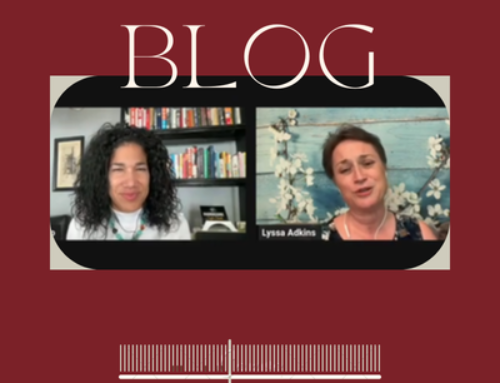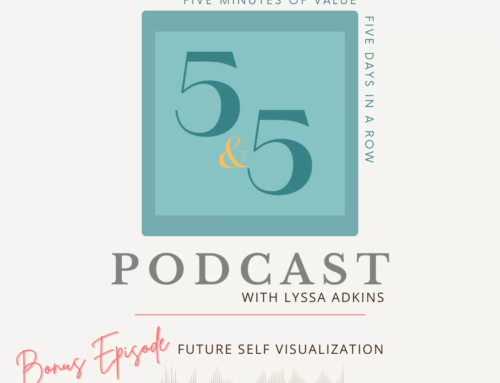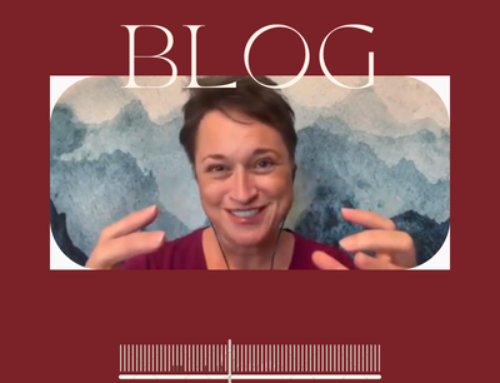As we careen toward 550,000 worldwide COVID-19 cases, it seems trivial (at best) and exploitative (at worst) to publish an article about decision-making. Part of me thinks it’s just not the right time for this article as I feel the pull for us to PAUSE our activity and reflect, for those of us privileged enough to do so.
The choice to write the article was a no-brainer for me. When the creative river flows, I go with it lest it decide to flow somewhere else! While I was writing, though, I held the tension of whether I would publish it. I sat in the question of which “side” of that tension to privilege in this situation the whole time I was writing. Here’s what my reflection yielded: I am committed to honoring the wisdom of the creative flow (of which I am a small part). With this commitment in the forefront, I become less concerned with how my motivations will be judged. So, I have decided to publish.
For whatever it’s worth, for whomever finds something useful in these words, I offer this article.
=================================================================
RULES, PRINCIPLES AND TENSIONS TO HOLD
I don’t know about you, but since COVID-19, I have been making a lot (a LOT) of decisions. Even the decision to go to the grocery store has become a weighty one. I think, “Do I take on the risk? Do I need coconut seltzer water that badly??”
I’ve heard it said that we, as humans, only have so much decision-making capacity in a day. If we use it all up self-negotiating the trivial decisions (a sandwich or a smoothie for lunch?) or battling with that one. hard. decision. then we may deplete ourselves.
Let’s imagine that decision-making capacity is like a battery, like on a sailboat or in an RV or in a Tesla. If you know you only have so much juice in a battery, you simply get good at power management. It’s totally possible. It just requires some conscious attention.
The first step in decision-making power management is to become aware of the decisions you make in a typical day. This is harder than it sounds. Our minds are decision-making fans – I’m doing it right now, trying to figure out the best word (I chose fans, but maybe fiends would have been better. Jury’s out). Obviously you won’t jot down ALL the decisions you make. That itself would take all day! But jot down the ones that bubble up into your awareness. Do this for a couple days and then look at the kinds of decisions you make frequently or the big decisions that keep coming up, but aren’t yet resolved. These are opportunities for better power management. I can think of three good power management strategies that may be even more important in these days of COVID-19 when so much is uncertain and upsetting: rules, principles and tensions.
Rules are awesome for low-stakes decisions or ones that can be made routine. Just make a rule and stick with it. Some things for which you currently use decision-making capacity could probably be a snap if you make a rule. For example, just to make life easier, you might make an arbitrary rule about what to eat for lunch. Alternate days for sandwich and smoothie. That way, you won’t have to stand in front of the fridge, zoned out like a zombie, spending all that decision-making battery on what to eat. If it’s Tuesday, it’s smoothie day. End of story. Done. Relieved.
Rules are stabilizing. That is their benefit. When I have a rule, I don’t have to think much and the world feels solid. When a rule is changed, especially if I’m not the one changing it, I feel as if something I counted on has been lost. My world gets rocked. I feel betrayed. For this reason, my general advice about rules has been to use them only when the situation truly is stable and people can count on the rule to work for the vast majority of situations.
In our COVID-19 context, however, it seems reasonable to also use rules when you just need a temporary feeling of stability and a relief from decision-making overload, even though you know the rule will need to change. Make a rule, but don’t believe that it conveys something true and solid about the world.
You’re just using this strategy, especially right now, to free up battery power for the decisions that really need it. Sandwich and smoothie is a silly example, but start thinking about all those decisions you spend energy on, and find a few that you can shift into “no battery needed” by making simple rules that work well enough. By the way, it’s smoothie day. ;)
Principles are things you stand for and serve as the “foundation for a system of belief or behavior or for a chain of reasoning.”[1]They give a basis from which to make decisions when the situation is changeable or so complicated that a rule just won’t cut it. Some examples of principles:
Individuals and interactions over processes and tools.[2]
Serve the mission and the customers will come.
Write your own permission slip.
You can see that principles don’t tell us exactly what to do, but they do point in a direction. They say, “more of this, less of that.” They give guardrails, and within those guardrails is freedom to choose. They count on people having some basic morality and ability to reason for the common good. The principle “write your own permission slip” doesn’t say, “Go crazy. Do anything you want, even if it’s not good for the product or your workmates.” It says, “Err on the side of action,” and implicitly expects you to act morally and with others in mind.
Most of the time, principles apply so you don’t have to think too much. You just follow the principle. It doesn’t take much decision-making battery, and you can move pretty fast. Because principles have a clear preference for “this over that” or ”this first”, they also slow you down enough to make a conscious decision when it’s time to go against that preference. When this happens, you have to justify your reasoning — at least to yourself and usually to others, as well.
Right now, in our shelter-at-home household there is my husband and myself. My parents live about 10 minutes away. My husband and parents are all in the COVID-19 high risk group. Our principle is: The one at least risk does the grocery shopping for all. That means me. Most of the time, the principle works. The other day, I just couldn’t. I was simply too emotional seeing the number of COVID-19 cases jump up so fast and knew I could not face the feeling of overwhelm seeing empty grocery shelves. So my husband went. I definitely had to justify going against the principle to myself, first, and then to the rest of my family. My parents were not pleased. With that situation behind us, the principle stands again. We are back to honoring the principle and I’m the one heading to the store.
That’s how principles work. They are a statement of what to stand for, what to preference, and still give you the freedom to consciously decide to go against them, with good reason.
Sometimes, though, principles don’t provide enough guidance or guardrails for the situation at hand.
It’s not a problem to solve, it’s a tension to hold. I’m not sure where I first heard this, so forgive me for forgetting the source (if, indeed, it’s not me). This statement is the essence of the most complex decision-making capability I know. When faced with a problem, or an outright tangled mess as most problems really are, holding the tension and sensing what wants to happen creates space for the emergence of a response that is highly tuned for the given situation.
To illustrate this go grab a towel, a piece of yarn, a scarf. Even the power cord for your computer or phone will work (but don’t go crazy with this next part and wreck it). Hold the object in your hands and pull it tight. Pull it a little tighter and hold it right there. Hold it… Hold it… Keep holding it… You may notice movements to the right or left, a little struggle; a little desire for one side or the other to “win” so long as you can relieve the tension! This is a representation what it feels like physically and emotionally to hold a tension. (If you haven’t let go of the object yet, do so now). Whew!
To give some examples, common tensions organizational leaders face in today’s business world are:
Telling |——————-| Inquiring
Making Decisions |——————-| Empowering Other Decision Makers
Correcting/Reprimanding |——————-| Creating Learning from Failure
The best way I know how to visually represent holding a tension is as you see it above — a continuum between two possible, and valid, ways to go. It is not that one side is always better than the other, or the “right” thing to do. If that were the case, we could just make a rule!
Because both are valid choices, the decision about which “side” to privilege is only for a given situation and needs to be re-evaluated for the next situation. In fact, there aren’t just two choices. There are a myriad of creative possibilities that are a mixture of the two sides, somewhere in the middle of the continuum.
So, how do you hold a tension?
The first thing is to name the two “sides” of the tension. These are probably what’s been pulling you in opposite directions already. You may be thinking something like, “Should I do ‘a’ or should I do ‘b’?” Those two things, ‘a’ and ‘b’ are good enough names for now. They may get more accurate as you work with the tension so be open to that change.
Then, sit in the inquiry, “What wants to happen?”
This inquiry may take days, sometimes weeks or even months.
It will certainly take hours.
During this time, listen deeply. To others. To yourself.
Ask yourself, “What am I committed to creating in this specific situation?”
Notice information that comes your way that helps you see the situation more completely.
Keep your mind only on this situation.
You are not creating a rule, or even a principle.
You are deciding which side of the tension to privilege just for this one situation.
Consider the principles available to you. Do they give any clues?
Consider your own values. Bring them to mind and see if you can sense an internal “rightness” when you consider one side and then the other. Does one feel more aligned to who you are and how you want to be?
As you are doing all this reflection in service of sensing what wants to happen, frequently ask yourself, “Is this a fresh thought?”[3]
If not, that thing stinks! Throw it out!
Asking “is this a fresh thought?” allows you to notice habitual patterns and recurring thoughts that may not be leading you anywhere new. If so, break the habit by coming back to the question of what you are committed to creating in this situation.
Sit in meditation or prayer in which you are listening rather than requesting or reciting.
An “answer” will come. A decision to privilege one side of the tension, or the other. Or a creative combination somewhere along the continuum. When this happens, take action while communicating. Tell people what you’re up to. At the least, let them know what you are committed to creating.
Obviously, holding a tension is more adaptive and responsive to situations where there is no “right” answer and so many of our situations these days tend to fall into this bucket. To do this takes a lot of decision-making battery power, especially at the beginning when you are learning how.
Just tell me what to do! Especially today, in the mental and emotional overload of our COVID-19 world, the tolerance for holding tensions is low and the desire for rules is high. I’ve recently worked with executive teams and mixtures of delivery and executive teams where I have seen this play out. The plea, “Just tell me what to do,” plays like an incessant bass line in the song of their conversations. Fair enough. It’s a worthy strategy to reduce the number of decisions that need to be made. Make rules where you can; where they will actually work; where they won’t rock peoples’ worlds too much when you have to change them.
And, recognize that the business world was already complicated enough that rules were less durable than we would like. Adding the rapidly changing world-centric crisis of COVID-19 to the foreground makes this even more so. Perhaps we are being called into, maybe even dragged into, building our skill for holding tensions as a more capable type of decision-making.
Since we can’t control most things, let’s get good at holding the tensions that get thrown our way. Let’s learn to listen to ourselves, to connect with our vision of what we want to create and consciously decide which side of the tension to privilege for each situation. Then, let’s get better at communicating how and why we resolved a tension, and get those affected on board. And, let’s take care of ourselves while doing so.
Managing well our decision-making battery is not just about getting “more” out of the decision-making capacity of the battery. It’s also about caring for the battery system itself so that it remains in a healthy condition.
Recharging the battery is a necessary thing in a sailboat, RV or a Tesla. It’s not a weakness to have to recharge the battery; it’s simply how it works. The same attitude could be applied our decision-making batteries. To have enough “juice” to hold the tensions and make the conscious decisions that come with our everyday life, we need to be recharging ourselves constantly. In the face of grave uncertainty and the anxiety that comes with COVID-19, I have significantly stepped up my meditation practice (Zazen) and my feminine movement practice (Qoya) as two good ways to recharge. It’s worth noticing your recharge practices and patterns. What are they? And, are they sufficient to keep your decision-making battery system in healthy shape?
Notice your habitual tendencies. In times of stress, which we are certainly in, it’s typical to “downshift” to a more habitual way of being, even if it’s not a match for the complexity of the situations that face us. When you notice this in yourself, first give yourself compassion. This time is tough. Then, pause and think about what’s truly needed: a rule, a principle, or holding a tension?
[1] Definition of “principle” from the Oxford Dictionary.
[2] From the Agile Manifesto.
[3] Adapted from meditation instructions given by Diane Musho Hamilton Roshi.







